Table of Contents
Introduction
Gardening is one of the most rewarding activities children can engage in. It teaches them about nature, responsibility, and the joy of growing their own plants. However, for kids to truly enjoy gardening, they need tools that are designed specifically for their small hands and developing motor skills.
This comprehensive guide explores everything parents and educators need to know about kids garden tools, including:
✔ The benefits of gardening for children
✔ Essential garden tools for young growers
✔ Safety tips and age-appropriate recommendations
✔ How to choose the best tools for your child
✔ Top-rated kids’ gardening sets compared
✔ Step-by-step guide to introducing kids to gardening
✔ Frequently asked questions
Let’s dig in!
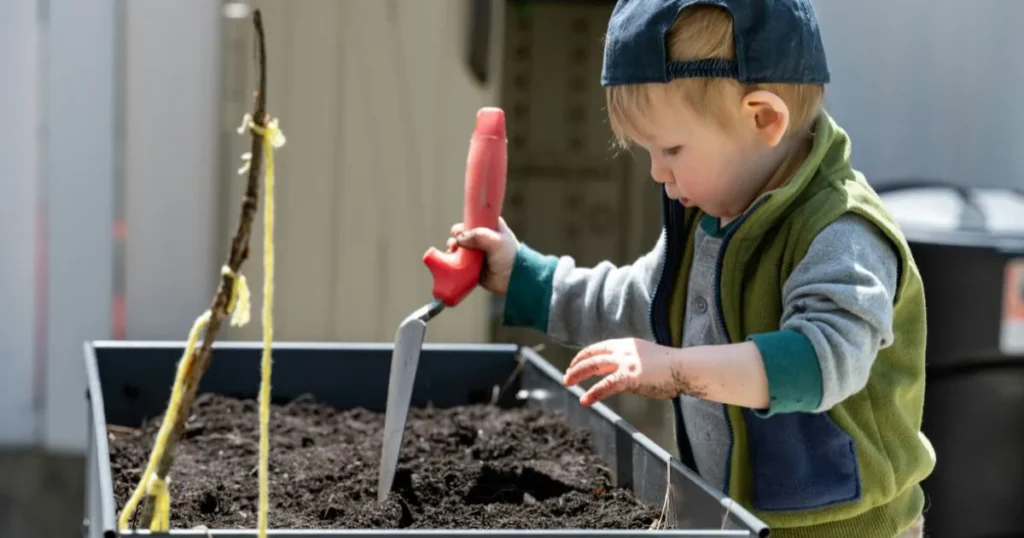
Why Gardening is Beneficial for Kids
Gardening offers numerous physical, mental, and educational benefits for children. Here’s why every child should experience the joy of gardening:
Educational Benefits
- Science Learning: Kids observe plant life cycles, photosynthesis, and ecosystems firsthand.
- Math Skills: Measuring soil depth, spacing seeds, and tracking growth involve basic math.
- Nutrition Awareness: Growing vegetables encourages healthier eating habits.
Physical and Mental Health Benefits
- Motor Skill Development: Digging, planting, and watering improve hand-eye coordination.
- Outdoor Exercise: Gardening gets kids moving and away from screens.
- Stress Relief: Connecting with nature reduces anxiety and boosts mood.
Life Skills Development
- Responsibility: Caring for plants teaches commitment and routine.
- Patience: Waiting for seeds to sprout helps kids understand delayed gratification.
- Creativity: Designing small gardens fosters imagination.
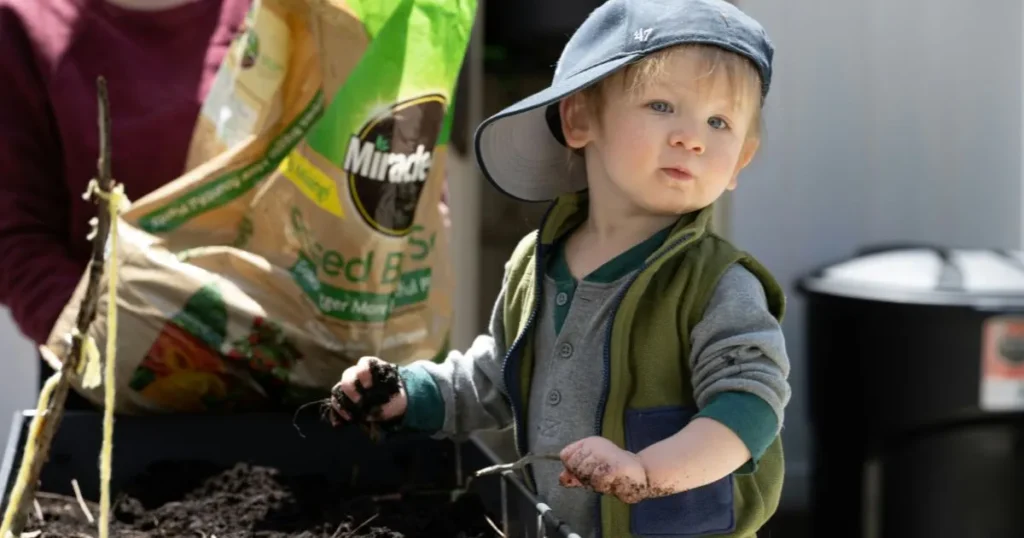
Must-Have Garden Tools for Kids
To make gardening enjoyable and safe, children need their own set of tools. Below are the essential kids garden tools and their uses:
Hand Trowel (Mini Shovel)
- Purpose: Digging small holes for seeds and transplanting seedlings.
- Ideal Material: Stainless steel or durable plastic with a rounded edge.
Kids’ Gardening Gloves
- Purpose: Protects hands from dirt, thorns, and blisters.
- Ideal Material: Breathable cotton with rubberized grips.
Child-Sized Rake & Hoe
- Purpose: Smoothing soil and removing weeds.
- Ideal Material: Lightweight wood or plastic with a metal head.
Watering Can with a Narrow Spout
- Purpose: Teaches controlled watering without over-saturating plants.
- Ideal Capacity: 1-2 liters for easy handling.
Kid-Friendly Wheelbarrow or Garden Tote
- Purpose: Carrying soil, plants, and tools.
- Best Choice: Plastic with sturdy wheels or a fabric tote bag.
Plant Markers & Decorative Stakes
- Purpose: Helps kids remember what they planted.
- Fun Idea: Let them decorate their own markers!
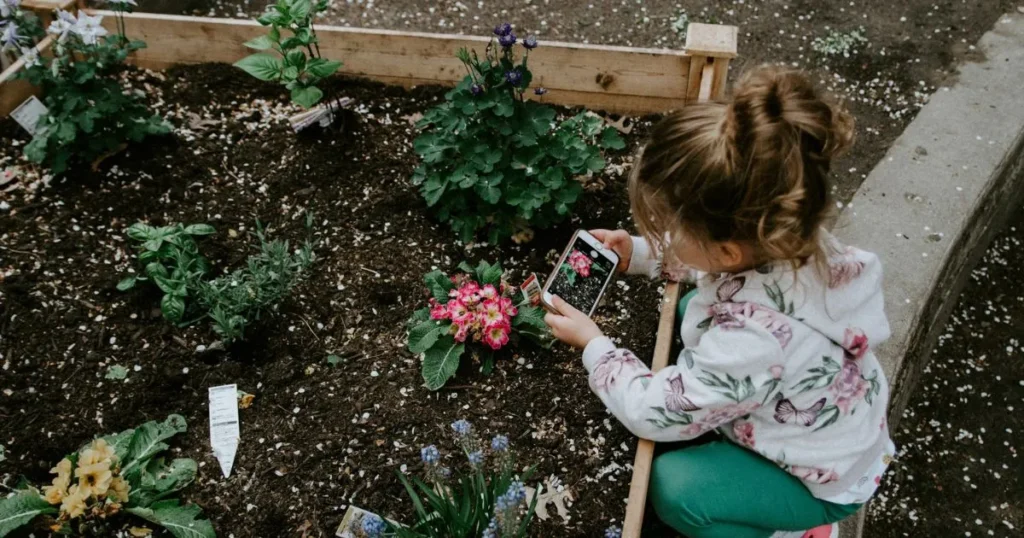
Safety Tips for Kids Using Garden Tools
Gardening should be fun, but safety always comes first. Follow these guidelines:
Always Supervise Young Gardeners
- Children under 6 should always be watched while using tools.
- Teach proper handling to prevent accidents.
Choose Age-Appropriate Tools
| Age Group | Recommended Tools | Safety Features |
|---|---|---|
| 2-4 years | Plastic trowel, watering can | Rounded edges, no sharp parts |
| 5-8 years | Lightweight metal tools | Short handles, ergonomic grips |
| 9+ years | Durable metal tools (smaller than adult versions) | Reinforced handles, safety gloves |
Protective Gear for Little Gardeners
- Gloves: Prevent blisters and splinters.
- Sun Protection: Wide-brimmed hats and sunscreen.
- Footwear: Closed-toe shoes to avoid injuries.
How to Choose the Best Kids’ Garden Tools
Not all kids’ gardening tools are created equal. Here’s what to look for:
Durability & Material
- Avoid flimsy plastic that breaks easily.
- Opt for stainless steel or reinforced plastic for longevity.
Size & Weight
- Handles should fit comfortably in small hands.
- Tools should be light enough for kids to use without strain.
Ergonomics & Safety
- Non-slip grips prevent accidents.
- Rounded edges reduce injury risks.
Fun & Engaging Designs
- Bright colors and playful shapes make gardening more appealing.
- Some sets come with animal or superhero themes to spark interest.
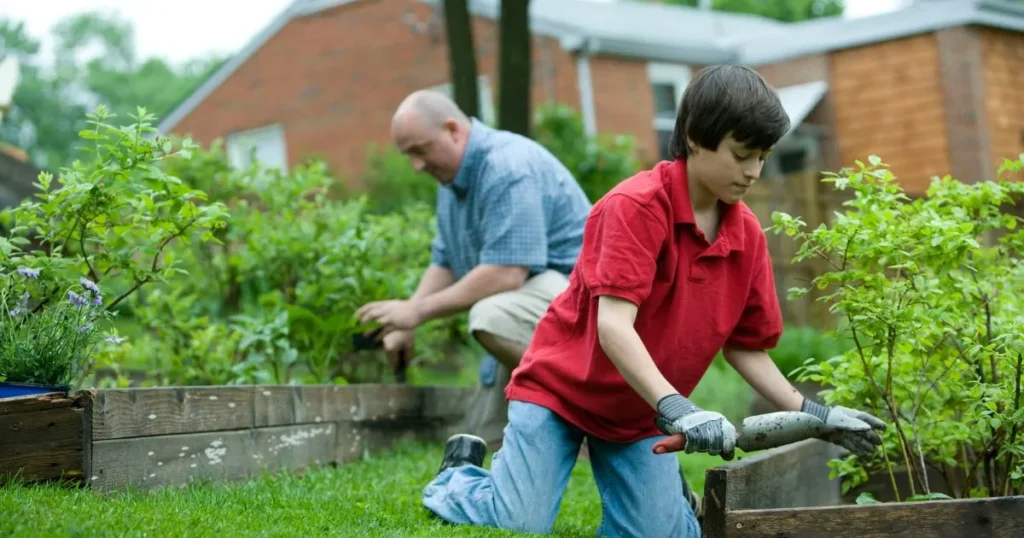
Top 5 Kids’ Garden Tool Sets Compared
Here’s a comparison of the best-rated kids’ gardening kits:
| Product | Material | Age Range | Included Tools | Price Range | Rating |
|---|---|---|---|---|---|
| Green Toys Garden Set | Recycled Plastic | 3+ | Trowel, rake, fork, watering can | $20-$30 | ⭐⭐⭐⭐⭐ |
| Costway Kids Gardening Kit | Metal & Wood | 5-12 | Gloves, apron, tools, tote bag | $25-$40 | ⭐⭐⭐⭐ |
| Melissa & Doug Gardening Set | Wood & Metal | 4-8 | Trowel, fork, spray bottle | $15-$25 | ⭐⭐⭐⭐ |
| Childhood Essentials Kids’ Tools | Stainless Steel | 6+ | Shovel, rake, hoe, carrying case | $30-$45 | ⭐⭐⭐⭐⭐ |
| Step2 Garden Wagon | Plastic | 2-6 | Wheelbarrow, shovel, rake | $40-$60 | ⭐⭐⭐⭐ |
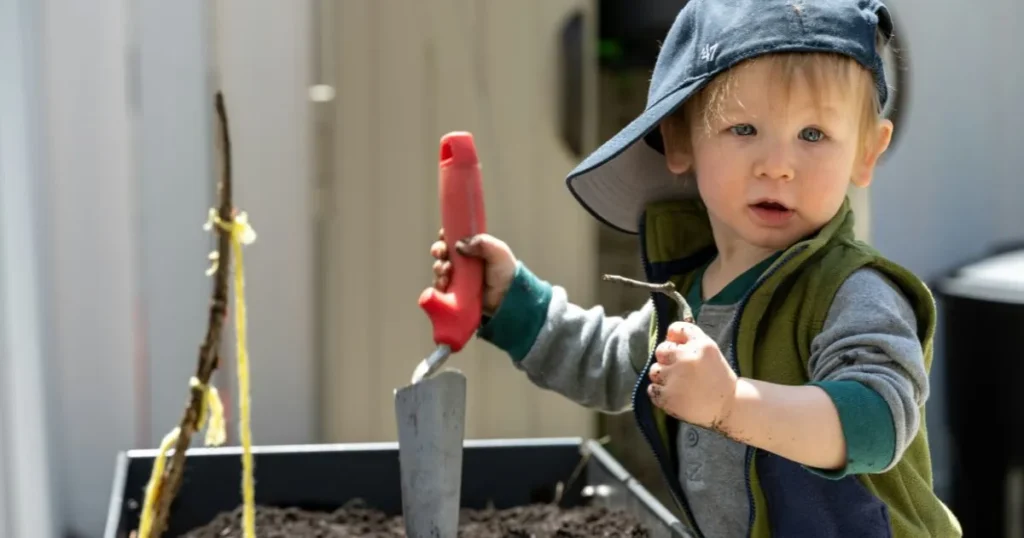
Teaching Kids to Garden – A Step-by-Step Guide
Start with Easy-to-Grow Plants
- Fast Sprouters: Radishes, sunflowers, beans.
- Hardy Plants: Cherry tomatoes, mint, marigolds.
Assign Simple Gardening Tasks
- Ages 3-5: Watering plants, digging small holes.
- Ages 6-9: Planting seeds, light weeding.
- Ages 10+: Planning garden layouts, composting.
Make It Fun & Interactive
- Let kids decorate their own pots.
- Create a “mini fairy garden” with tiny decorations.
- Track plant growth with a gardening journal.
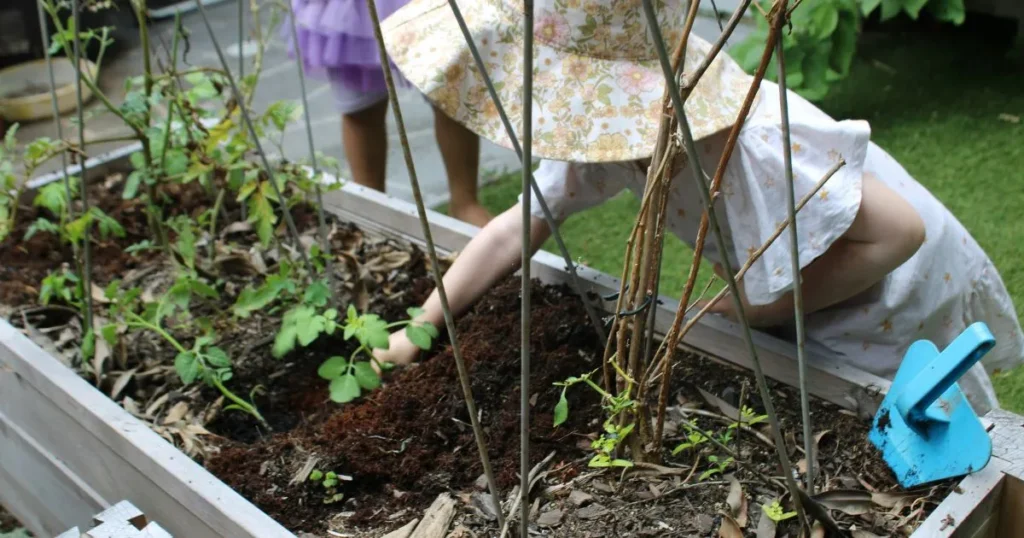
Conclusion
Gardening is a fantastic way for kids to learn, stay active, and develop a love for nature. By providing them with safe, durable, and kid-friendly garden tools, you can make the experience enjoyable and educational.
Whether they’re planting flowers, growing vegetables, or just playing in the dirt, the right tools will help them cultivate a lifelong passion for gardening.
Frequently Asked Questions (FAQ)
What age can kids start using garden tools?
Children as young as 2-3 years old can use plastic tools under supervision. Older kids (5+) can handle lightweight metal tools.
Are metal garden tools safe for kids?
Yes, if they are child-sized with rounded edges. Always supervise younger children.
How do I clean and store kids’ garden tools?
- Rinse off dirt and dry thoroughly to prevent rust.
- Store in a dry place or a dedicated kids’ gardening tote.
Can kids use adult garden tools?
No—adult tools are too heavy and large, increasing injury risk. Kid-sized tools are safer and easier to handle.
What’s the best first plant for a child to grow?
Sunflowers, cherry tomatoes, or radishes are fast-growing and rewarding for beginners

